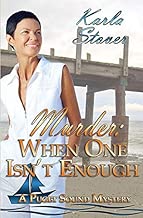
A Hood Canal Mystery based on the memoirs of a San Francisco Madame
Orphans of the Storm
Wind out of the
south, whitecaps washing over the floating bridges, the ferry system shut
down—a Pacific Northwest storm. And one post-storm,
spring morning while driving to work, I heard that the previous night’s gully
washer caused another problem: squirrel’s
nests knocked out of trees leaving a surfeit of orphaned babies. An animal welfare organization put out a call
for foster parents.
Wow! That sounds like fun, I thought. I can do that. I love squirrels. When I hit the first stop light I wrote down their phone number.
At work, I found a
place where a box of the family Sciuridae
could sleep while I worked, and
where I could retreat to give them little bottles of food and some TLC. Then I called the rescue group.
“I heard about
your need for squirrel baby foster parents,” I said, “and I’m really
interested.”
“Well now, isn’t
that nice," a lady said, "but before adoption can be considered, I have a few questions.”
“Sure.”
“Your name?”
“Karla Stover.”
“Where do you
live?”
“Tacoma.”
“Oh well, now,
that’s a bit of a problem.”
“How so?”
“Well, the babies
were orphaned in Seattle.”
“I can drive there
to pick some up.”
“And there are
their physicals.”
Say what?
“Well, who
administers the physicals?”
“A vet.”
“We have lots of
vets in Tacoma, and running water and everything. My husband and I have gone to the same vet
for years.”
Levity wasn’t her
strong suit.
“Yes, but it has
to be a wild animal vet.”
I sensed
roadblocks—possibly the result of animosity and disdain Seattle feels for Tacoma.
“Well, I’ll ask
our vet if he can give them their physicals,” I said.
“No can do, I’m
afraid. We already have an approved wildlife vet ready to take them on.”
“Maybe I can drive
to your vet, then. Where's the office?”
“Lynnwood.”
Lynnwood!
That’s a hundred miles away. Up North. Driving through Seattle's horrible traffic.
Still, I persevered. “I could do that.”
“Every week?”
“What?”
“Every week. The orphaned babies have to be checked and
weighed weekly. We want to make sure
they’re getting the best possible care.”
“Will they be vaccinated
for hanta virus and Lyme’s disease?” I asked.
“Do they need Frontline?”
Perhaps sensing my sarcasm she said, “I’m sorry, but we have strict rules and regulations about who qualifies to adopt
our orphans and how they are to be raised.”
“They’re rodents,
for gosh sake.”
“You see, that
statement shows a flippant attitude. I’m
sorry but you don’t qualify.”
Jeez! Take it down a notch, lady, I thought as she hung up on me.
About a week
later, I heard a knock on the front door. It was
two little kids with three squirrel babies in a box. “Here,” one boy said, “Mom said we should
give them to you.”
I didn’t know who
the kids were, who their mom was, or why she thought I should have the care and
responsibility of three hostile-looking rodents. Their unattractiveness knocked the romance of
the idea right out of the ring. Nevertheless,
I took the box and carried it to the
garage. Then I attempted to put dishes of water
and sunflower seeds—shelled, I might add—in the box. Nasty little buggers. Their only interest was in trying to bite the
hand that was attempting to feed them.
After a few days,
when it didn’t look like they were eating, I decided to turn them loose among
the apple, cherry, pear, and filbert nut trees in our backyard. They scampered for safety.
Ever since, we’ve had squirrel families
eating the filberts, biting holes into the fruit and, digging up my bulbs.
And all without
physicals or mailed reminders for booster shots.


A Tacoma Washington murder with trips to Seattle and the Olympic Peninsula
 a Gothic novel in the good old tradition
a Gothic novel in the good old tradition
 a Gothic novel in the good old tradition
a Gothic novel in the good old tradition




















